The word succulent means juicy from the Latin word ‘succus’ for juice. And these plants are filled with juice in the leaves and stems mainly, to act as a strategic reserve in summer dry weather.
These species are native to relatively arid parts of the world, surprisingly including Ireland.
There are a couple of kinds of native plants that are succulents: navelwort and stone crop and they grow in dry conditions, the sedum on the tops of old stone walls, the navelwort, or pennywort, as it is also known, on shaley shaded ground.
Succulents all feature swollen parts, and are like the members of the giant cactus family except that in general, the succulents have no spines or only notable exceptions such as agave. Unlike cacti, which all come from the single cactus family – despite their considerable variation – succulents come from a range of plant families in a massive example of parallel evolution.
With a thick waxy coat on their skin to reduce moisture loss, if you forget to water house plants, these are more forgiving than most, even though they grow best when properly watered and fed.
The crassula family is known especially for the jade plant or money tree, which has large rounded thick leaves and grows like a miniature tree.
The propeller plant has opposed blue-grey leaves that look like propellers.
Aloe is a common succulent house plant. The true aloe, Aloe vera, can be grown as a house plant with tall tubular leaves, each filled with healing gel
The rat-tail plant has small leaves along the stem. The silver crown is a related plant with stunning blue-white leaves.
Kalanachoe is grown as a flowering house plant with red, yellow or pink flowers.
Also known as ‘panda plant’, it has hairy ear-like leaves tipped at the edges with bunches of brown hairs.
The bryophyllums are similar, some with arrow-shaped leaves and some with narrow leaves.
These have the unusual characteristic of producing small plantlets at the edges of the leaves. These fall off and take root easily.
Aloe is a common succulent house plant. The true aloe, Aloe vera, can be grown as a house plant with tall tubular leaves, each filled with healing gel.
The partridge-breast aloe gets its name from the striping of dark-green and pale green on the leaves.
The leaves are pointed and handsome flowers are sent up on tall stems.
Of similar shape to the aloes, the agaves have a sharp spine at the tip of the leaves and down the edges and do well in a warm country.
The century plant can be grown as a much smaller plant, restricted by the pot. The striped kind is especially pretty.
The sedums are very varied. The jelly bean plant has leaves the shape and size of jelly beans and shiny like them too.
They are grey green with wax and often have shiny red tips. The ‘beans’ drop off and root easily.

Succulents.
The burro’s tail is similar with grey-green leaves and long stems that droop over the sides of the pot.
Sempervivums, though hardy, can be grown as house plants – the cobweb house leek looks very pretty and the ‘cobwebbing’ is not disturbed by weather as it would tend to be outdoors. Echeverias are very similar, the best known being the blue echeveria, which is also grown outdoors in mild areas.
This has bright blue-green leaves in a rosette and produce bright orange flowers on tall stems.
Aeonium is another of the rosette succulents. It has tongue-shaped leaves, flat in shape, arranged in rings to make a very flat rosette. The saucer plant looks like an upturned saucer. There are deep red-black versions which can be put outdoors in summer to develop the colour as they need good light to achieve this.
The string of hearts, Ceropegia, has long trailing stems with marbled heart-shaped leaves.
The string of beads is similar, with rounded pea-sized leaves on dropping wiry stems and it is a senecio, related to daisy bush.
Early winter-flowering heather varieties, such as December Red’ and ‘King George’, are in flower now and others will be coming on in the next few weeks.
Such a tough little plant that is easy to grow, it is a really valuable addition to the garden for winter colour. In colours of purple, pink and white, they look very well with spring bulbs, such as crocuses and snowdrops, which are already in flower now too.
The purple or white crocuses look perfect beside pink or purple heathers.
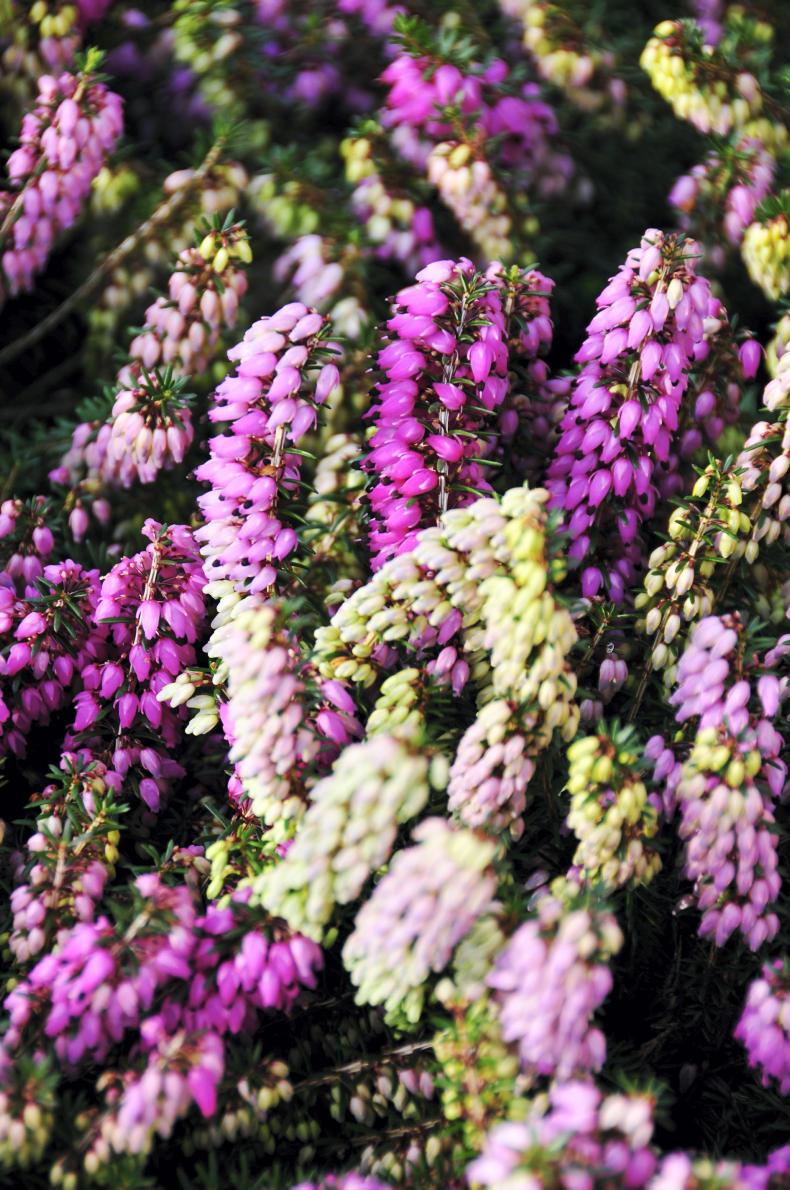
Heathers.
But they are dull out of flower and the best way to use heathers is as individual plants or small groups at the front of beds and borders, on banks and on rock gardens.
Used as spots of colour, rather than large expanses, heathers are very effective for drawing the eye through the garden, enriching the whole area rather than making a blaze in one corner. Buy winter heathers in flower now.
Fruit, vegetables and herbs
For really early crops, sow the seeds of early varieties of cabbage, cauliflower, carrots, lettuce and onions now. These will have to be started off in warm conditions indoors, or in a propagator, and grown on in a greenhouse or tunnel. Sow potatoes of early varieties soon.
Lawns
There has been a good spell of dry weather and if the soil is firm enough a first mowing can be carried out at any opportunity. If the lawn area has drainage pipes, check the drainage outlets are clear to allow surplus water to escape. The lawnmower should be serviced.
Trees, shrubs and roses
Roses can be pruned at any time now. Check all trees and shrubs planted last autumn for signs of wind-rocking and insert the support of a short cane. The ground has been very wet for planting — there is a distinct danger of killing the roots in waterlogged soil.
Flowers
If the ground is not too wet, border flowers can be lifted and divided, if necessary. Many of these are beginning to show signs of wakening up. Bedding flowers can be started off in a heated propagator now, but it is still too early for the easier kinds as they get too big.
Greenhouse and house plants
Poinsettia, azalea and cyclamen can be made to last longer. They will need watering but only just enough to keep them moist, certainly do not leave them standing in water. Give no feeding. Be sure to give them good light but do not leave them behind a curtain at night.
The word succulent means juicy from the Latin word ‘succus’ for juice. And these plants are filled with juice in the leaves and stems mainly, to act as a strategic reserve in summer dry weather.
These species are native to relatively arid parts of the world, surprisingly including Ireland.
There are a couple of kinds of native plants that are succulents: navelwort and stone crop and they grow in dry conditions, the sedum on the tops of old stone walls, the navelwort, or pennywort, as it is also known, on shaley shaded ground.
Succulents all feature swollen parts, and are like the members of the giant cactus family except that in general, the succulents have no spines or only notable exceptions such as agave. Unlike cacti, which all come from the single cactus family – despite their considerable variation – succulents come from a range of plant families in a massive example of parallel evolution.
With a thick waxy coat on their skin to reduce moisture loss, if you forget to water house plants, these are more forgiving than most, even though they grow best when properly watered and fed.
The crassula family is known especially for the jade plant or money tree, which has large rounded thick leaves and grows like a miniature tree.
The propeller plant has opposed blue-grey leaves that look like propellers.
Aloe is a common succulent house plant. The true aloe, Aloe vera, can be grown as a house plant with tall tubular leaves, each filled with healing gel
The rat-tail plant has small leaves along the stem. The silver crown is a related plant with stunning blue-white leaves.
Kalanachoe is grown as a flowering house plant with red, yellow or pink flowers.
Also known as ‘panda plant’, it has hairy ear-like leaves tipped at the edges with bunches of brown hairs.
The bryophyllums are similar, some with arrow-shaped leaves and some with narrow leaves.
These have the unusual characteristic of producing small plantlets at the edges of the leaves. These fall off and take root easily.
Aloe is a common succulent house plant. The true aloe, Aloe vera, can be grown as a house plant with tall tubular leaves, each filled with healing gel.
The partridge-breast aloe gets its name from the striping of dark-green and pale green on the leaves.
The leaves are pointed and handsome flowers are sent up on tall stems.
Of similar shape to the aloes, the agaves have a sharp spine at the tip of the leaves and down the edges and do well in a warm country.
The century plant can be grown as a much smaller plant, restricted by the pot. The striped kind is especially pretty.
The sedums are very varied. The jelly bean plant has leaves the shape and size of jelly beans and shiny like them too.
They are grey green with wax and often have shiny red tips. The ‘beans’ drop off and root easily.

Succulents.
The burro’s tail is similar with grey-green leaves and long stems that droop over the sides of the pot.
Sempervivums, though hardy, can be grown as house plants – the cobweb house leek looks very pretty and the ‘cobwebbing’ is not disturbed by weather as it would tend to be outdoors. Echeverias are very similar, the best known being the blue echeveria, which is also grown outdoors in mild areas.
This has bright blue-green leaves in a rosette and produce bright orange flowers on tall stems.
Aeonium is another of the rosette succulents. It has tongue-shaped leaves, flat in shape, arranged in rings to make a very flat rosette. The saucer plant looks like an upturned saucer. There are deep red-black versions which can be put outdoors in summer to develop the colour as they need good light to achieve this.
The string of hearts, Ceropegia, has long trailing stems with marbled heart-shaped leaves.
The string of beads is similar, with rounded pea-sized leaves on dropping wiry stems and it is a senecio, related to daisy bush.
Early winter-flowering heather varieties, such as December Red’ and ‘King George’, are in flower now and others will be coming on in the next few weeks.
Such a tough little plant that is easy to grow, it is a really valuable addition to the garden for winter colour. In colours of purple, pink and white, they look very well with spring bulbs, such as crocuses and snowdrops, which are already in flower now too.
The purple or white crocuses look perfect beside pink or purple heathers.

Heathers.
But they are dull out of flower and the best way to use heathers is as individual plants or small groups at the front of beds and borders, on banks and on rock gardens.
Used as spots of colour, rather than large expanses, heathers are very effective for drawing the eye through the garden, enriching the whole area rather than making a blaze in one corner. Buy winter heathers in flower now.
Fruit, vegetables and herbs
For really early crops, sow the seeds of early varieties of cabbage, cauliflower, carrots, lettuce and onions now. These will have to be started off in warm conditions indoors, or in a propagator, and grown on in a greenhouse or tunnel. Sow potatoes of early varieties soon.
Lawns
There has been a good spell of dry weather and if the soil is firm enough a first mowing can be carried out at any opportunity. If the lawn area has drainage pipes, check the drainage outlets are clear to allow surplus water to escape. The lawnmower should be serviced.
Trees, shrubs and roses
Roses can be pruned at any time now. Check all trees and shrubs planted last autumn for signs of wind-rocking and insert the support of a short cane. The ground has been very wet for planting — there is a distinct danger of killing the roots in waterlogged soil.
Flowers
If the ground is not too wet, border flowers can be lifted and divided, if necessary. Many of these are beginning to show signs of wakening up. Bedding flowers can be started off in a heated propagator now, but it is still too early for the easier kinds as they get too big.
Greenhouse and house plants
Poinsettia, azalea and cyclamen can be made to last longer. They will need watering but only just enough to keep them moist, certainly do not leave them standing in water. Give no feeding. Be sure to give them good light but do not leave them behind a curtain at night.







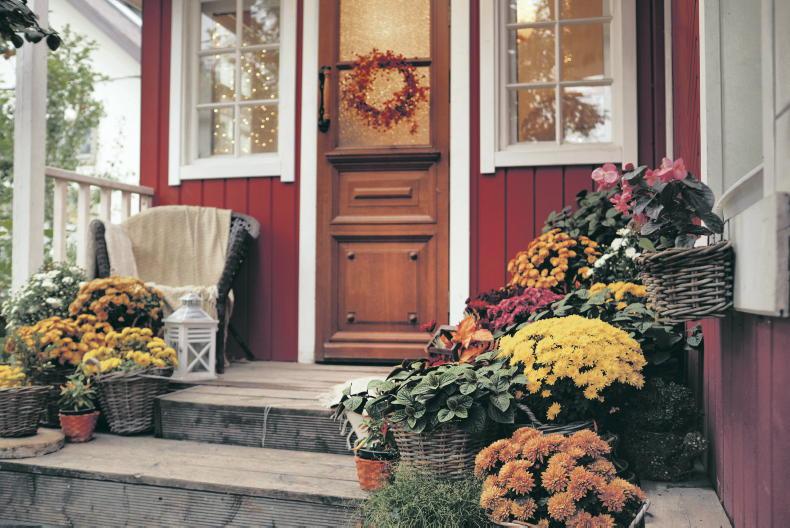
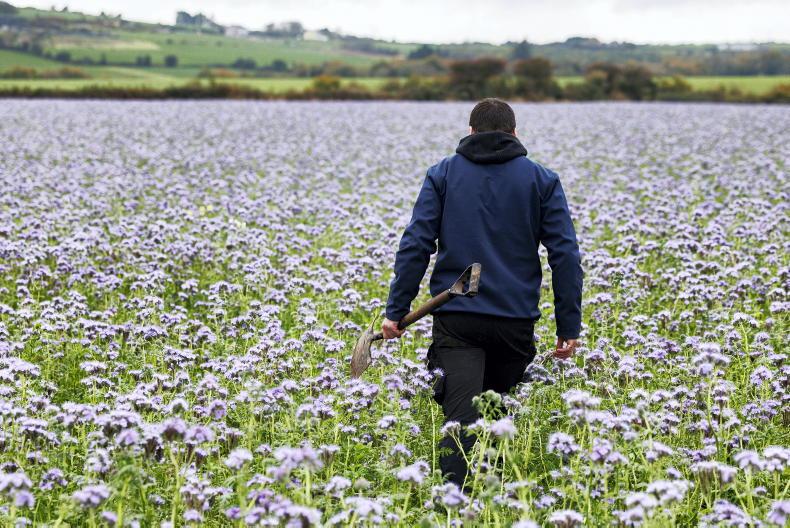
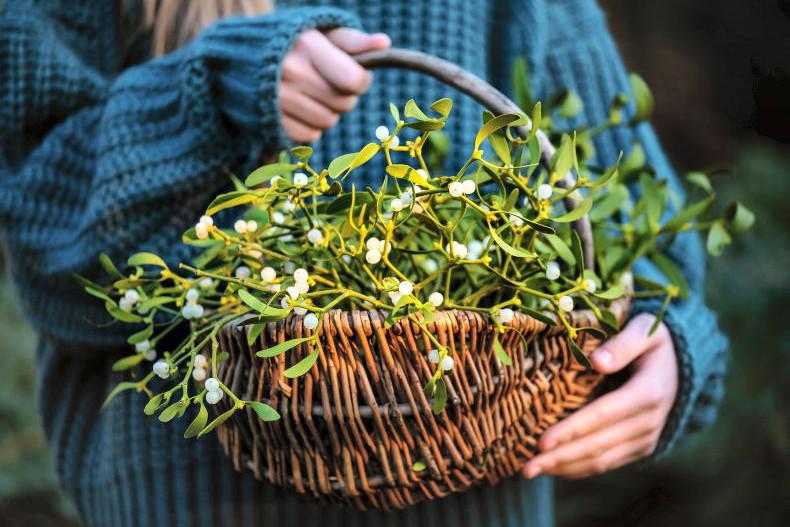
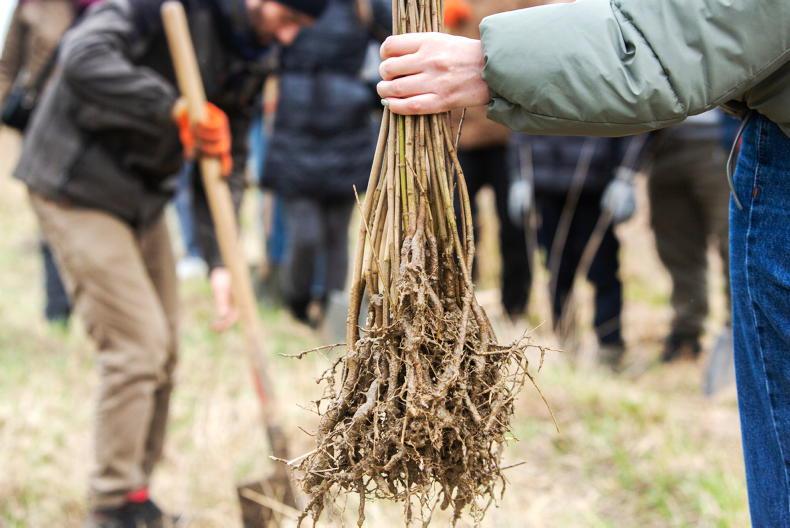
SHARING OPTIONS